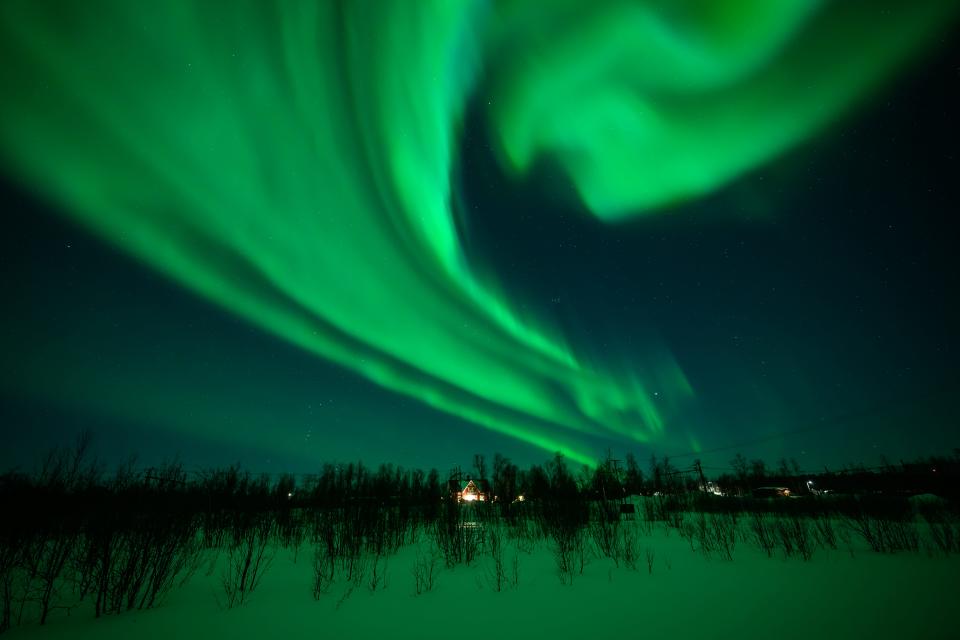When were the northern lights last seen in Ohio? All about the aurora borealis in the state
If conditions are right, the northern lights could be visible across Ohio this weekend. But it won't be the first time they've put on a show in the Buckeye State.
Here's what to know.
Will the northern lights be visible tonight?
Due to strong solar storms, the aurora borealis could be pushed south into the United States this weekend, into Ohio and possibly as far south as Alabama if conditions are right.
The Space Weather Prediction Center has observed at least seven coronal mass ejections (explosions of plasma and magnetic fields) from the sun that are directed right toward the Earth. They are expected to arrive as early as Friday evening and last through Sunday, causing geomagnetic storms that create northern lights.
The SWPC, a branch of the National Oceanic and Atmospheric Administration, has issued a severe geomagnetic storm Watch, level G4 out of 5, due to these ejections.
These storms, if they arrive at their full potential, could bring push the aurora into the northern United States.
When was the last time the aurora borealis was in Ohio?
The last really good showing of the northern lights in Ohio was in November 2001, Dean Regas writes for the Cincinnati Enquirer.
Regas recalls locking up at the Cincinnati Observatory the night of Nov. 5, 2001, and looking up to see a green sky, the color the aurora typically displays when in Ohio, he wrote in a 2021 article.
Another visible aurora occurred in October 2011, Cleveland State astronomer Jay Reynolds told Cleveland WKYC TV-3 in a 2014 article. People reported seeing it from the shores of Lake Erie, and Reynolds witnessed it from downtown Cleveland, he told the station.
Others include an aurora in January 2004 so bright it tinted the heavy cloud cover green, Reynolds told WKYC, and another in September 2003.

What is the aurora borealis?
Auroras are ribbons of light weaving across Earth's northern or southern polar regions, according to NASA. They are caused by magnetic storms that have been triggered by solar activity, such as solar flares or coronal mass ejections. Energetic charged particles from these events are carried away from the Sun by the solar wind.
These energized particles hit the atmosphere at 45 million mph and are redirected to the poles by the earth's magnetic field, according to Space.com, creating the light show.
During major geomagnetic storms, they expand away from the poles and can be seen over some parts of the United States, according to the NOAA.
What is a coronal mass ejection?
NASA describes coronal mass ejections as "huge bubbles of coronal plasma threaded by intense magnetic field lines that are ejected from the Sun over the course of several hours." The Akron Beacon Journal reports that the space agency says they often look like "huge, twisted rope" and can occur with solar flares, or explosions on the sun's surface.
How to view the aurora borealis
During times of high geomagnetic activity, which pushes the northern lights further south, the aurora will be visible directly overhead in the northern United States, according to the prediction center.
For the best viewing, the center recommends that it be very dark. Get away from city lights and avoid trying to see them on the night of a full moon. The best time to view the aurora is within an hour or two of midnight, or 10 p.m. to 2 a.m.
This article originally appeared on Record-Courier: When was the aurora borealis last in Ohio? State's northern lights history

